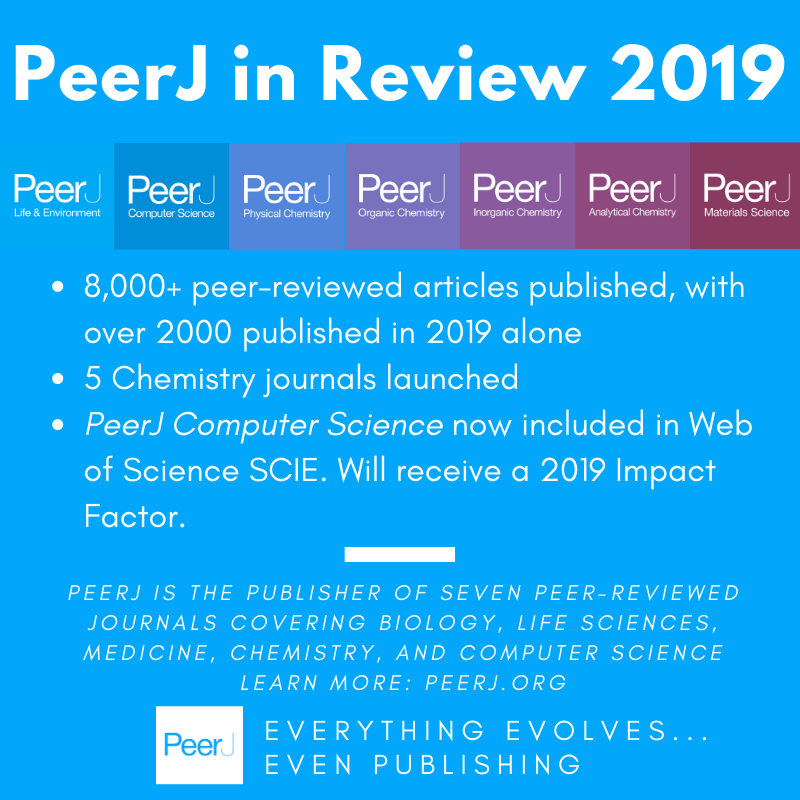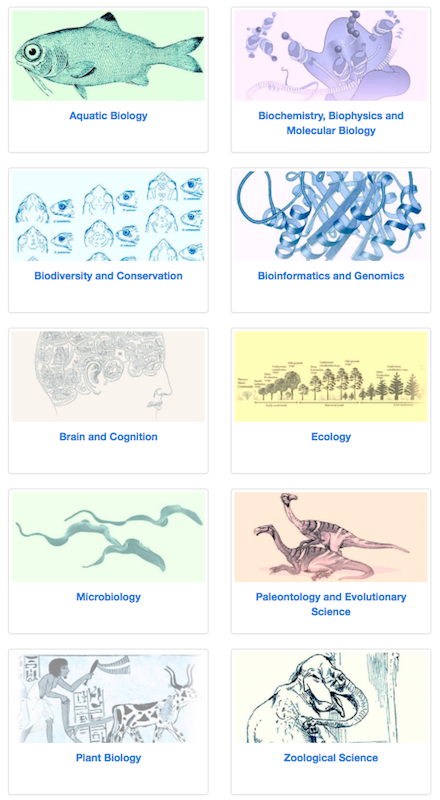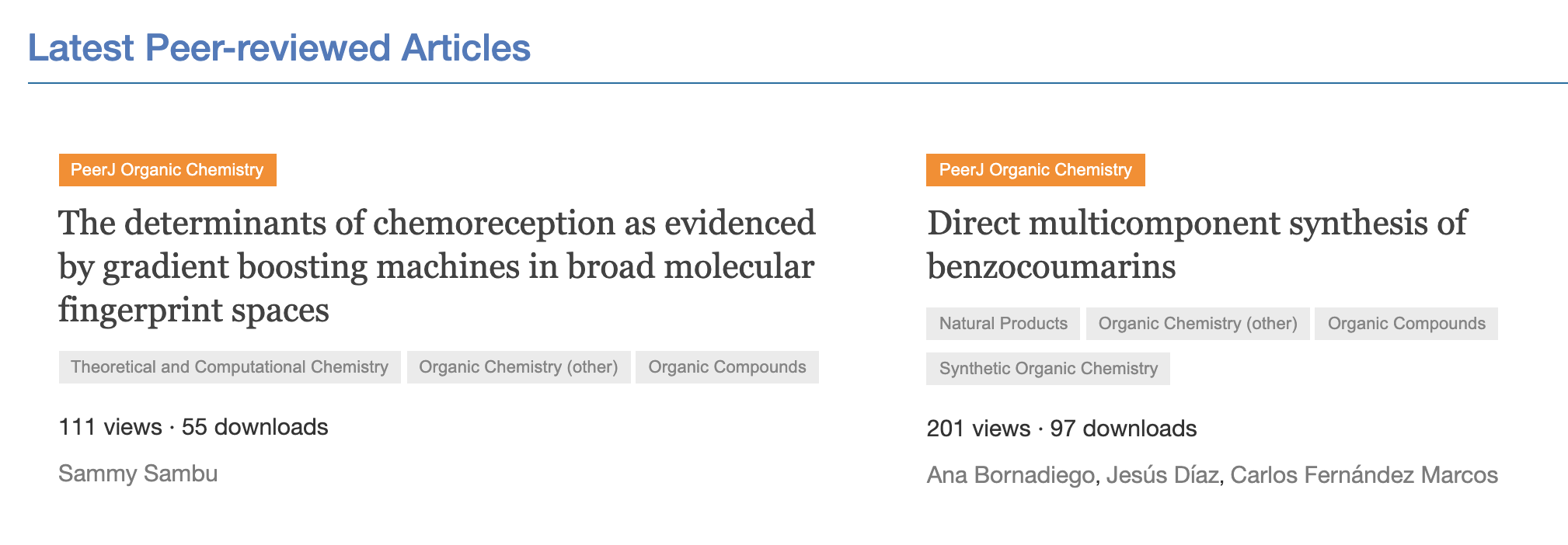As the year winds down, we thought we would take the opportunity to look back at some of the especially noteworthy papers we published this year across our journals. More and more researchers are choosing to publish their work Open Access and we are proud to provide the high-quality, efficient peer-review and publishing services that today’s researchers require.
In 2019, we published over 2000 peer-reviewed articles and have now published over 8000 Open Access publications since we first began publishing in 2013. As we look to provide even more researchers with affordable Open Access options, we launched five new journals in chemistry subject areas. It has been a busy year at PeerJ and we want to especially thank our engaged community of editors and reviewers for making this all possible. And we look forward to even more groundbreaking, high-quality science in 2020!

Here is a look at some of the Top Cited papers of the year. As there tends to be a bit of a citation lag, we looked at papers published in the last two years to give a clearer picture of what has been cited more recently. Over the next few weeks, we will also be looking at other metrics including Top Viewed, Most Discussed and Most Press Mentions. Stay tuned!
PeerJ – the Journal of Life and Environmental Sciences
Aquatic Biology
- Reef fish communities are spooked by scuba surveys and may take hours to recover by Emslie et al.
- A review of bottom-up vs. top-down control of sponges on Caribbean fore-reefs: what’s old, what’s new, and future directions by Pawlik et al.
Biochemistry, Biophysics and Molecular Biology
- Ten years of progress and promise of induced pluripotent stem cells: historical origins, characteristics, mechanisms, limitations, and potential applications by Omole and Fakoya
- A public dataset of overground and treadmill walking kinematics and kinetics in healthy individuals by Fukuchi et al.
Biodiversity and Conservation
- DNA metabarcoding of littoral hard-bottom communities: high diversity and database gaps revealed by two molecular markers by Wangensteen et al.
- Primates in peril: the significance of Brazil, Madagascar, Indonesia and the Democratic Republic of the Congo for global primate conservation by Estrada et al.
Bioinformatics and Genomics
- Linking pangenomes and metagenomes: the Prochlorococcus metapangenome by Delmont and Eren
- Accuracy of taxonomy prediction for 16S rRNA and fungal ITS sequences by Robert Edgar
Brain and Cognition
- Resounding failure to replicate links between developmental language disorder and cerebral lateralisation by Wilson and Bishop
- Exercise can improve sleep quality: a systematic review and meta-analysis by Banno et al.
Ecology
- A brief introduction to mixed effects modelling and multi-model inference in ecology by Harrison et al.
- Analyzing mixing systems using a new generation of Bayesian tracer mixing models by Stock et al.
Environmental Science
- Random forest as a generic framework for predictive modeling of spatial and spatio-temporal variables by Hengl et al.
- Regenerative agriculture: merging farming and natural resource conservation profitably by LaCanne and Lundgren
Microbiology
- Evidence-based design and evaluation of a whole genome sequencing clinical report for the reference microbiology laboratory by Crisan et al.
- Viromes of one year old infants reveal the impact of birth mode on microbiome diversity by McCann et al.
Paleontology and Evolutionary Science
- A 250 plastome phylogeny of the grass family (Poaceae): topological support under different data partitions by Saarela et al.
- Repeatability of glucocorticoid hormones in vertebrates: a meta-analysis by Schoenemann and Bonier
Plant Biology
- Herbarium specimens can reveal impacts of climate change on plant phenology; a review of methods and applications by Jones and Daehler
- Identification of exosome-like nanoparticle-derived microRNAs from 11 edible fruits and vegetables by Xiao et al.
Zoological Science
- The oldest Archaeopteryx (Theropoda: Avialiae): a new specimen from the Kimmeridgian/Tithonian boundary of Schamhaupten, Bavaria by Rauhut et al.
- Stat-tracks and mediotypes: powerful tools for modern ichnology based on 3D models by Belvedere et al.
PeerJ Computer Science
- Comparison and benchmark of name-to-gender inference services by Santamaría and Mihaljević
- SNARE-CNN: a 2D convolutional neural network architecture to identify SNARE proteins from high-throughput sequencing data by Le and Nguyen
- Taking advantage of the software product line paradigm to generate customized user interfaces for decision-making processes: a case study on university employability by Vázquez-Ingelmo et al.
- The importance of behavioral data to identify online fake reviews for tourism businesses: a systematic review by Reyes-Menendez et al.
PeerJ Chemistry Journals
We launched five new chemistry journals just a few months ago and they have already received thousands of views and downloads. We are looking forward to sharing more about the excellent chemistry content in the new year! Here is a snapshot of what we have already published:




